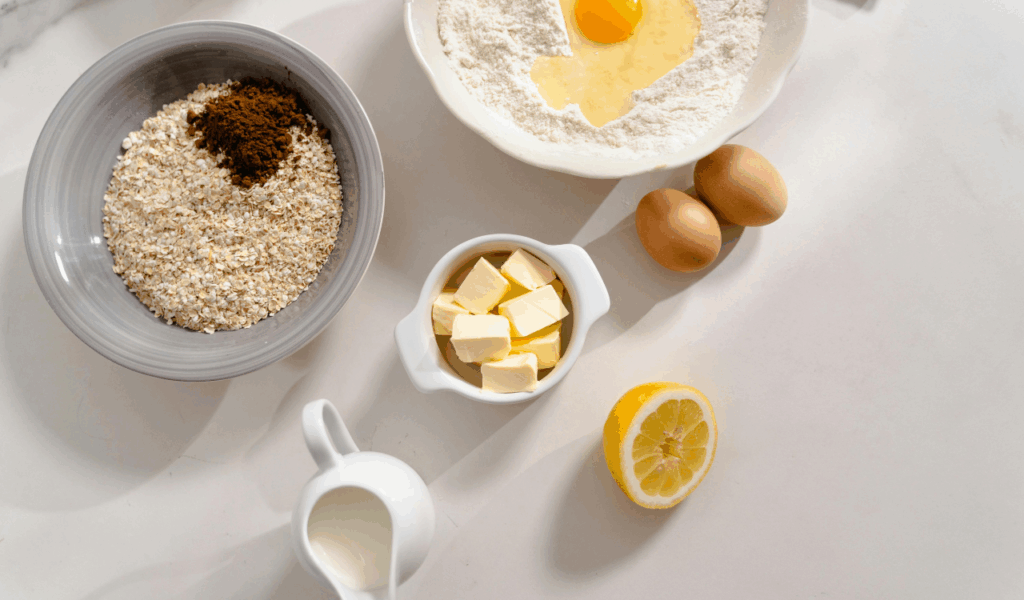8 Ingredients That Turn Basic Meals Into Comfort Classics

Most of the time, one or more of a select few magic ingredients are responsible for transforming a dish from “just dinner” to a true comfort classic. Everyday staples can be transformed into dishes you crave when you’re stressed, exhausted, or just in the mood for something calming with the right addition. Eight particular ingredients are listed below that regularly transform simple meals into comforting favorites; each is explained in detail, along with suggestions for using them in your cooking.
1. Butter or a Good Quality Fat

One of the fundamental comfort factors in cooking is fat, which adds richness, balances flavors, and contributes to aroma, all of which help a dish feel comforting and gratifying. Consider using butter rather than oil to sauté vegetables or adding grated cheese and a knob of butter to a simple pasta dish. The “melt-in-the-mouth” sensation that we frequently identify with comfort is caused by the fat melting, coating your tongue, and slightly slowing down your sense of flavor. Using high-quality fat also allows you to use less and still achieve a significant result, which helps to ensure that the dish is comforting without feeling too heavy.
2. Garlic (Fresh or Roasted)

Garlic is a flavor powerhouse because it contributes three essential components of comfort food: familiarity, a hint of warmth, and savoury depth. Roasted garlic becomes creamy and intensely fragrant, while fresh garlic, when cooked gently, becomes sweet and mellow. Adding garlic to staples like pasta, rice, veggies, or soups instantly elevates them from “okay” to “cozy, soothing, crave-worthy.” Garlic is a convenient and affordable option when you’re in a pinch. Adding a few cloves of garlic to a soup, baked dish, or simple vegetable stir-fry can change the dish’s flavor because it works equally well in all cuisines.
3. A Splash of Cream or Full-Fat Dairy

Richer forms of dairy, such as cream, full-fat yogurt, creme fraiche, or melted cheese, provide two comforting benefits: first, they add a smooth, opulent texture; second, they soften harsh or spicy flavors, making food feel calming and mellow. A simple casserole or soup can be instantly transformed into “comfort food” by adding cheese or cream. It produces the “rich mouthfeel” that our brains connect to comfort and contentment. However, portion size is important; if it’s too large, it may overpower the meal. Instead of using it as the base, use it as a finishing touch to achieve the ideal “comfort boost” without being overly heavy.
4. Warm Spices (Nutmeg, Cinnamon, Smoked Paprika)

Comfort food is frequently associated with words like “warm” and “spicy,” even if they are used subtly. Warm spices that add depth, a hint of aroma, and a comforting familiarity include smoked paprika, cinnamon, and nutmeg, especially in savory dishes. They transform something basic, like roasted veggies, creamy potatoes, or a sauce made with tomatoes, into something elegant yet comforting. Subtlety is key: if you use too much, it will taste overdone or dessert-like. A dusting of smoked paprika on roasted potatoes or a hint of nutmeg in a creamy béchamel adds that “extra layer” of comfort without changing the dish’s identity.
5. A Savoury Stock or Low-Sodium Broth

A foundation of umami and warmth is laid when you begin a dish with flavorful stock or broth (instead of just water), which gives everything a richer, more inviting, and fuller feel. It’s particularly useful for soups, stews, grains, risottos, and even vegetable cooking because a good stock can provide comfort without relying solely on dairy or heavy fat. Additionally, you can add fresh herbs or vegetables to add complexity and control the salt by using a low-sodium variety. In summary, you’ll notice that your “basic” meals become more satisfying with little additional effort if you substitute water for stock.
6. A Good-Quality Cheese (for Melting or Topping)

Comfort is inherent in cheese; it is gooey, flavorful, and delightful whether it is melted over a dish, layered into a sauce, or sprinkled on top. Pasta becomes decadent, potatoes become incredibly satisfying, and vegetables feel richer when a basic dish is enhanced with high quality cheese. Additionally, cheese contributes umami, or that savory “meaty” flavor, and saltiness, which helps satisfy that comfort quota without depending entirely on butter or cream. The secret is balance: use cheese sparingly so that it enhances rather than overpowers the dish and pick cheese that enhances rather than overpowers it.
7. Fresh Herbs (Parsley, Thyme, Basil) at the End

Fresh herbs definitely add comfort, especially when added at the end of cooking, even though it may seem counterintuitive. They counterbalance richness and avoid “heavy dish fatigue” by adding brightness, aroma, and a touch of freshness. For instance, right before serving, you garnish pasta with basil or a creamy soup with chopped parsley. It conveys the words “home-cooked,” “fresh,” and “considerate.” Comfort is frequently linked by the human palate to freshness, variety of aroma, and richness. Therefore, without making cooking more difficult, a simple herb garnish can turn a simple meal into a comforting one.
8. A Sweet Component (Honey, Caramelised Onions, Roasted Vegetables)

There is often a hint of sweetness in comfort food not dessert-level, but just enough to balance the savory flavors and give the dish a “balanced hug.” Caramelized onions on top of a savory dish, honey glaze on roasted vegetables, or naturally sweet roasted root vegetables all work well. In small amounts, sweetness sets off pleasure signals in the brain, and when combined with fat or savory foods, it produces the “go back for seconds” effect. This method makes a simple meal feel more satisfying, layered, and complete without using a lot of sugar or making dinner into dessert.





